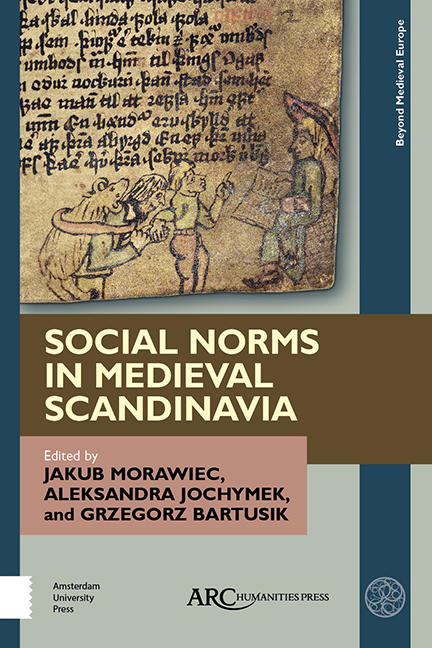Chapter 2 - Silk, Settlements, and Society in Íslendingasögur
Published online by Cambridge University Press: 20 November 2020
Summary
ALTHOUGH THE LAST ten years have witnessed a number of relevant publications, a broader scholarly discussion of the literary significance of clothing in Icelandic saga literature is required to facilitate better understanding. In an attempt at stimulating further debate, I will focus on the complex narrative of clothing in Íslendingasögur through an examination of the fabric silk. Exclusive, fashionable garments made from costly materials play an important role within the saga-plot, influence its outcome and reflect social norms within the “saga-society.”
In recent decades Scandinavian fashion has often been regarded as idiosyncratically distinct from continental fashion, especially when the fashions of Insular-Nordic countries such as Iceland, the Faroe Islands, and Greenland are taken into account.
For instance, in March 2014 the exhibition The Weather Diaries was shown at the Museum Angewandte Kunst in Frankfurt am Main, Germany. Artists Sarah Cooper and Nina Gorfer had been studying the impact of nature as well as tradition on fashion design in Iceland, Greenland, and the Faeroe Islands. In the official catalogue, Matthias Wagner K., the director of Museum Angewandte Kunst, offers an explanation of fashion's exceptional position in the Far North:
The comprehensive transformation in the fashions of Central Europe, owing to radical changes in society's values during the French Revolution, barely left a mark on the Nordic countries […] When clothing became fashion on the Faroe Islands, Iceland and Greenland, it did not however mean the rejection of the notion of fashion as something aristocratic, elegant, luxurious and beautiful— because that notion had never existed. The historical development of fashion on the European mainland had not rubbed off on those who, until well into the twentieth century, with arduous labour and at the risk of their lives, had wrested a living from the barren soil and, to an even greater degree, the sea.
However, this does not accord with the medievalist's understanding of perceptions of clothing in the Far North in the past. Contrary to Matthias Wagner K.'s thesis, the use of clothing as a medium to express aristocracy and sovereignty is in fact detectable.
- Type
- Chapter
- Information
- Social Norms in Medieval Scandinavia , pp. 35 - 50Publisher: Amsterdam University PressPrint publication year: 2019



